Related Research Articles

Brownfield refers to land that is abandoned or underutilized due to pollution from industrial use. The specific definition of brownfield land varies and is decided by policy makers and/or land developers within different countries. The main difference in definitions of whether a piece of land is considered a brownfield or not depends on the presence or absence of pollution. Overall, brownfield land is a site previously developed for industrial or commercial purposes and thus requires further development before reuse.

A green roof or living roof is a roof of a building that is partially or completely covered with vegetation and a growing medium, planted over a waterproofing membrane. It may also include additional layers such as a root barrier and drainage and irrigation systems. Container gardens on roofs, where plants are maintained in pots, are not generally considered to be true green roofs, although this is debated. Rooftop ponds are another form of green roofs which are used to treat greywater. Vegetation, soil, drainage layer, roof barrier and irrigation system constitute green roof.
Marjetica Potrč is an artist and architect based in Ljubljana, Slovenia. Potrč's interdisciplinary practice includes on-site projects, research, architectural case studies, and drawings. Her work documents and interprets contemporary architectural practices and the ways people live together. She is especially interested in social architecture and how communities and governments can work together to make stronger, more resilient cities. In later projects, she has also focused on the relationship between human society and nature, and advocated for the rights of nature.
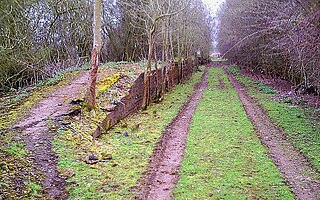
An abandoned railway station is a building or structure which was constructed to serve as a railway station but has fallen into disuse. There are various circumstances when this may occur – a railway company may fall bankrupt, or the station may be closed due to the failure of economic activity such as insufficient passenger numbers, operational reasons such as the diversion or replacement of the line. In some instances, the railway line may continue in operation while the station is closed. Additionally, stations may sometimes be resited along the route of the line to new premises – examples of this include opening a replacement station nearer to the centre of population, or building a larger station on a less restricted site to cope with high passenger numbers.

RSPB Dearne Valley Old Moor is an 89-hectare (220-acre) wetlands nature reserve in the Dearne Valley near Barnsley, South Yorkshire, run by the Royal Society for the Protection of Birds (RSPB). It lies on the junction of the A633 and A6195 roads and is bordered by the Trans Pennine Trail long-distance path. Following the end of coal mining locally, the Dearne Valley had become a derelict post-industrial area, and the removal of soil to cover an adjacent polluted site enabled the creation of the wetlands at Old Moor.
Over the centuries the roles of rivers as part of the city has altered many times from the original use for the irrigating crops in nearby fields, as well as being an essential resource in establishing a permanent settlement. However, when the industrial revolution took place in the 19th century the role of the rivers in cities altered and it became a far more valuable resource as it allowed not only for the transportation of goods from town to town but also became the basis for the expansion and improvement of the trading prowess of the city. This transportation of goods was done through the construction of a canal network spreading across the country which tamed the rivers sufficiently and so therefore allowed for the movement of goods such as coal to move from place to place. Furthermore, after the advancement of the railway network which now took over most of the movement of goods throughout the country, this left the rivers and canals of Britain without a role in Britain’s transport network. This allowed areas of the canal and river networks to become polluted through chemical waste and public misuse, which caused difficulties for the animals for which the river and its surrounding wetlands and marshes were their natural habitats. Yet since the 1950s there has been a dramatic increase in the number of riverside developments which have not only brought increased money into the area but have also redeveloped and enhanced the natural environment and increased the aesthetic qualities of these areas on the whole.
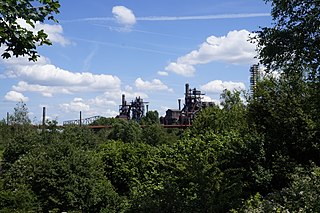
Landschaftspark is a public park located in Duisburg-Meiderich, Germany. It was designed in 1991 by Latz + Partner, with the intention that it work to heal and understand the industrial past, rather than trying to reject it. The park closely associates itself with the past use of the site: a coal and steel production plant and the agricultural land it had been prior to the mid 19th century.

Sustainable landscape architecture is a category of sustainable design concerned with the planning and design of the built and natural environments.
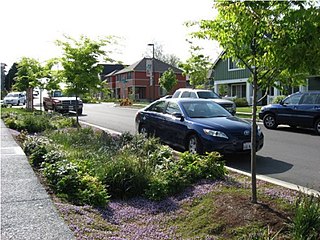
Green infrastructure or blue-green infrastructure refers to a network that provides the “ingredients” for solving urban and climatic challenges by building with nature. The main components of this approach include stormwater management, climate adaptation, the reduction of heat stress, increasing biodiversity, food production, better air quality, sustainable energy production, clean water, and healthy soils, as well as more anthropocentric functions, such as increased quality of life through recreation and the provision of shade and shelter in and around towns and cities. Green infrastructure also serves to provide an ecological framework for social, economic, and environmental health of the surroundings. More recently scholars and activists have also called for green infrastructure that promotes social inclusion and equality rather than reinforcing pre-existing structures of unequal access to nature-based services.
Ecological design or ecodesign is an approach to designing products and services that gives special consideration to the environmental impacts of a product over its entire lifecycle. Sim Van der Ryn and Stuart Cowan define it as "any form of design that minimizes environmentally destructive impacts by integrating itself with living processes." Ecological design can also be defined as the process of integrating environmental considerations into design and development with the aim of reducing environmental impacts of products through their life cycle.
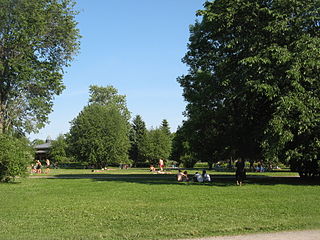
In land-use planning, urban green space is open-space areas reserved for parks and other "green spaces", including plant life, water features - also referred to as blue spaces - and other kinds of natural environment. Most urban open spaces are green spaces, but occasionally include other kinds of open areas. The landscape of urban open spaces can range from playing fields to highly maintained environments to relatively natural landscapes.

Land recycling is the reuse of abandoned, vacant, or underused properties for redevelopment or repurposing.
Drosscape is an urban design framework that looks at urbanized regions as the waste product of defunct economic and industrial processes. The concept was realized by Alan Berger, professor of urban design at MIT, and is part of a new vocabulary and aesthetic that could be useful for the redesign and adaptive reuse of ‘waste landscapes’ within urbanized regions.
An Internationale Bauausstellung (IBA) or International Architecture Exhibition is a German device for urban engineering and architecture, in order to show new concepts in terms of social, cultural and ecologic ideas.

King Barrow Quarry is a disused site of former 19th century stone quarries on the Isle of Portland, Dorset, England. It is located in the north-east corner of Tophill. The quarry, now a Dorset Wildlife Trust nature reserve, covers 12.2 hectares. Both King Barrow and the nearby Tout Quarry make up the Dorset Wildlife Trust's Portland Quarries Nature Park. Portland also has two butterfly reserves: Broadcroft Quarry and Perryfield Quarry.
Rainer Schmidt is a German landscape architect, urban designer, and professor of landscape architecture at the Beuth University of Applied Sciences Berlin. Rainer operates three German offices located in Munich, Berlin, and Bernburg.
The Internationale Bauausstellung Emscher Park or International Architecture Exhibition Emscher Park was a programme for structural changes in the so-called German Ruhr region from 1989 to 1999 in order to show new concepts in terms of social, cultural and ecologic ideas.

Natur-Park Südgelände is a public park located in the Schöneberg district in the Berlin borough of Tempelhof-Schöneberg. The 18 hectare park is located on the former Tempelhof railway yard. The park is known for its mix of wild nature, decaying railway facilities and art.
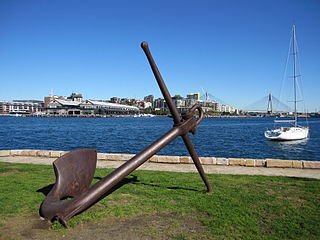
Iloura Reserve is a heritage-listed public reserve on the site of a former timber yard at 10-20 Weston Street, Balmain East, Inner West Council, Sydney New South Wales, Australia. Following the resumption of the timber yard for public space in the 1960s, the present reserve was designed and laid out by landscape architect Bruce Mackenzie and constructed in two stages: stage one in 1970 and stage two in 1981. It is also known as Peacock Point and Illoura. The reserve is owned by the Inner West Council. It was added to the New South Wales State Heritage Register on 29 November 2013.

Scioto Audubon Metro Park is a public park and nature preserve in Columbus, Ohio. The park is managed by the Columbus and Franklin County Metro Parks and is part of the Scioto Mile network of parks and trails around Downtown Columbus. The park features numerous trails, wetlands, rock climbing, volleyball and bocce courts, and numerous other amenities. At the western edge is the Grange Insurance Audubon Center, considered the first nature center built in close proximity to a downtown area.
References
- Bothmann, Frank, and Sabine Auer. 2009. The New Emscher Valley – Reshaping an urban Landscape creates regional Identity. In REAL CORP 2009: Cities 3.0 – smart, sustainable, integrative. Strategies, concepts and technologies for planning the urban future, edited by M. SCHRENK, V. V. POPOVICH, D. ENGELKE and P. ELISEI.
- Drexler, Justina 2005. Post-Industrial Nature in the Coal Mine of Göttelborn, Germany: The Integration of Ruderal Vegetation in the Conversion of a Brownfield, in Wild Urban Woodlands New Perspectives for Urban Forestry, edited by I. Kowarik and S. Körner. Berlin: Springer